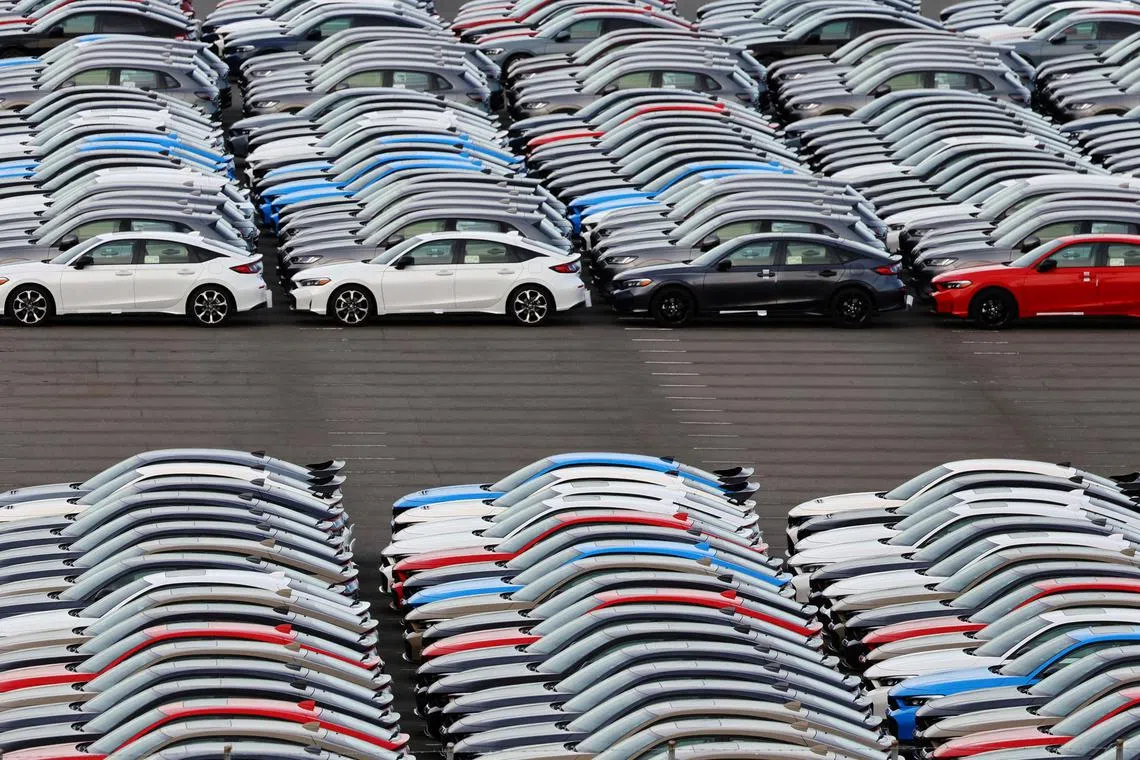Trump signs order to lower US tariffs on Japan autos to 15%
Sign up now: Get ST's newsletters delivered to your inbox

Japan's crucial auto sector accounts for around 8 per cent of the country’s jobs.
PHOTO: REUTERS
Follow topic:
WASHINGTON - US President Donald Trump signed an order on Sept 4 to lower tariffs on Japanese autos, as Washington moves to implement its trade pact negotiated with Tokyo.
Japanese autos will face a 15 per cent tariff instead of the current 27.5 per cent, while the level for many other goods will similarly be capped at 15 per cent, according to the text of the executive order published by the White House.
The outcome marks a win for Japan, after Tokyo’s tariff envoy headed to Washington on Sept 4 to press Mr Trump to sign the document for the changes
Top government spokesman Yoshimasa Hayashi said Japan welcomed the executive order, which marked “the steadfast implementation” of the deal.
While the two countries had initially unveiled a trade pact in late July, they appeared to diverge in its details.
When Mr Trump in early August implemented higher tariffs on Japan – as part of a flurry targeting dozens of economies – its 15 per cent rate stacked on existing levels for many products.
Japan’s tariffs envoy Ryosei Akazawa had earlier told reporters that Washington was expected to revise the rule.
According to the new order, the 15 per cent cap for many products will apply retroactively to goods shipped from Aug 7 – the date that the higher duties on dozens of economies took effect.
The modifications are to be made within seven days of the rule being published on the Federal Register.
Apart from Washington’s country-specific tariff levels, Mr Trump has also imposed separate sector-specific tariff rates, including a 25 per cent duty on autos and parts.
This, coupled with an existing 2.5 per cent tariff the Japanese auto industry faced, took the overall level to 27.5 per cent.
The hefty duties had marked a heavy blow to Japan and its crucial auto sector, which accounts for around 8 per cent of the country’s jobs.
Japan’s deal wins it a similar reprieve to the European Union, which also has a 15 per cent maximum tariff on many products.
But speaking in Washington, Mr Akazawa told Japanese media on Sept 5 that the 15 per cent tariff would “still cause damage to our nation’s industries”.
“The Japanese government will take swift and necessary measures, like financing assistance,” he added.
Mr Akazawa was also expected to engage in further discussions during his US trip about Mr Trump’s assertion that Japan would make investments worth US$550 billion (S$709.3 billion) in the United States.
According to Mr Trump’s order, the investments “will be selected by the United States Government” but the document did not go into detail.
Mr Ishiba said on Sept 5 that Tokyo had sent a letter to Washington saying “we would like to build a golden age for Japan and the United States together with President Trump, and that we would like to invite him to Japan”.
Mr Trump has said the United States will keep 90 per cent of the profits from the investments, which Japan has said will mostly consist of loans and loan guarantees.
Mr Akazawa had cancelled an earlier visit after Washington said that it was considering including a reduction in Japanese tariffs on agricultural products in the presidential order, the Nikkei business daily reported.
Mr Trump has long pressed Japan to import more American rice. AFP

